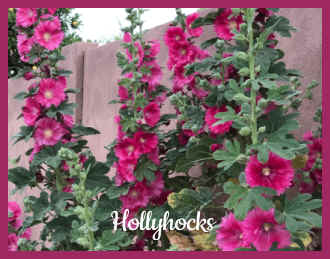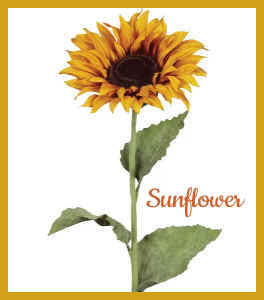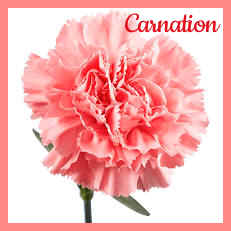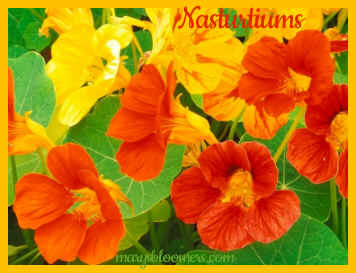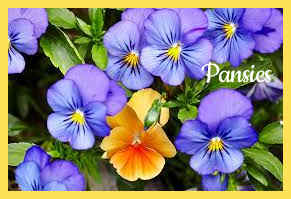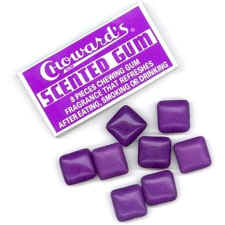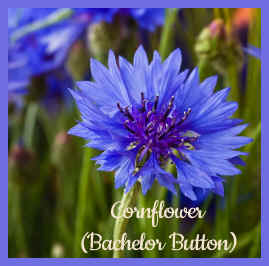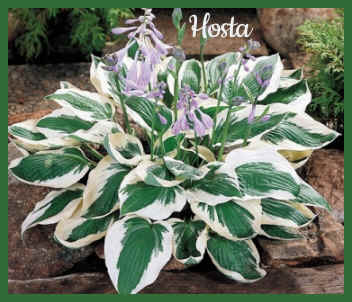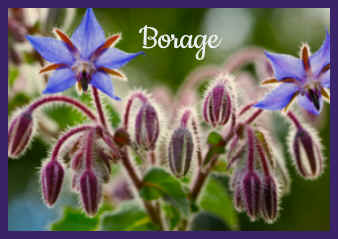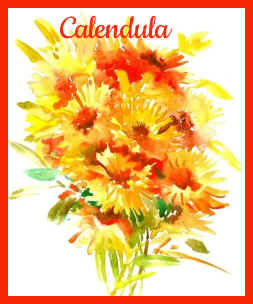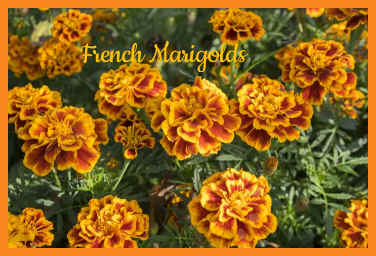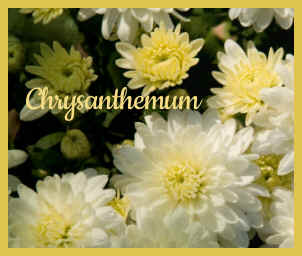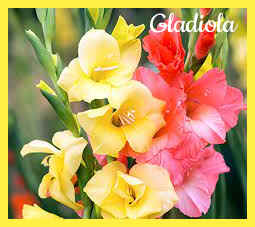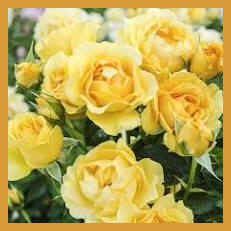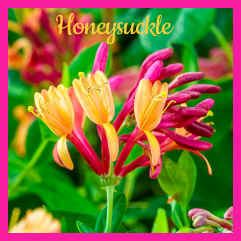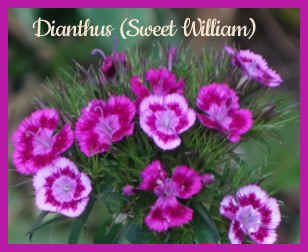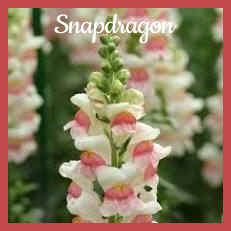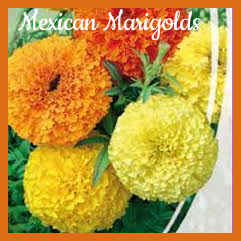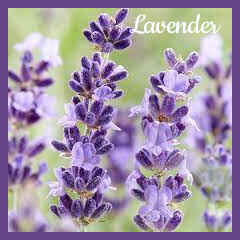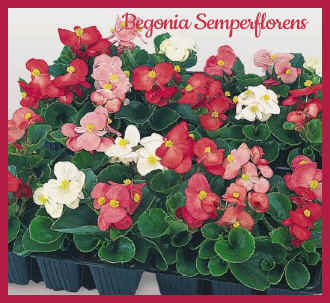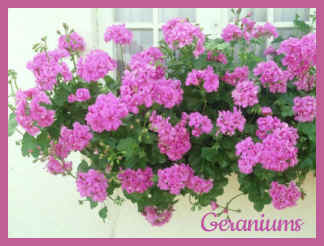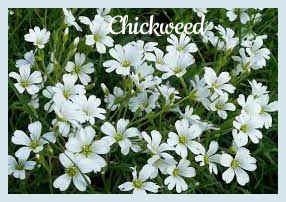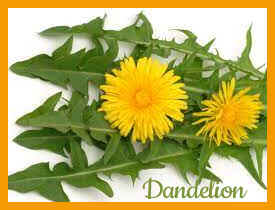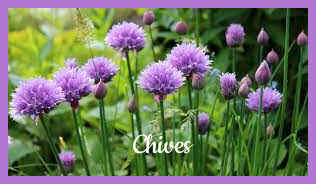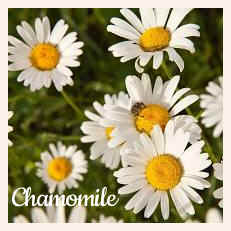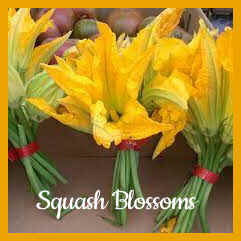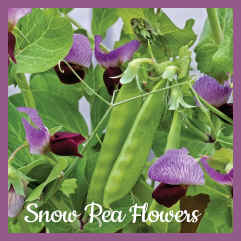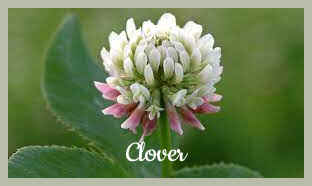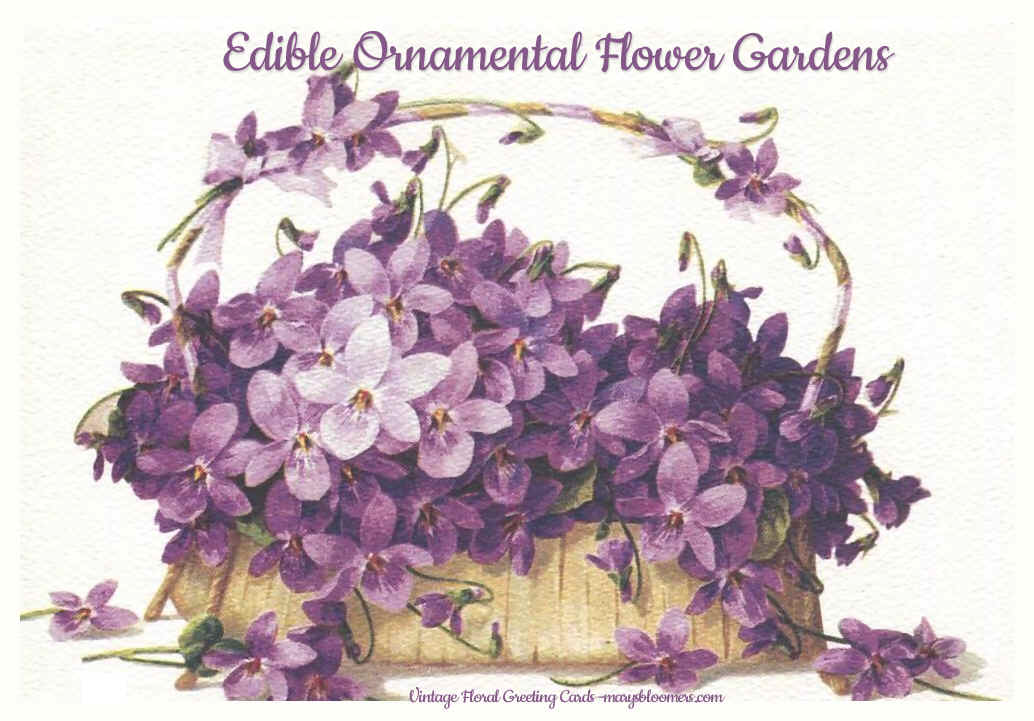 |
|
Edible Flowers In The Garden and Landscape Edible
Ornamental, Herb, and Weed Flowers |
|
If you're a gardener, and also a bit of a survivalist, you know you'll be able to stay well and healthy by just grazing your yard if you grow these pretty edible plants, and you know they're safe to eat. I grow several of these, and I grow organically. So pluck-and-eat is how I like to roll. I became interested in edible landscapes and flowers decades ago. I used to walk to Central Park in NYC on weekends, and always walked in the wooded areas, where expert horticulturists and botanists conducted foraging and wildcrafting tours. One did just mushrooms, one did green leafy plants, another did only medicinal herbs. Flowers were more or less ignored because the landscape in the park was almost all easily -found green stuff at the time. There was a guide who was all about plant poisons. That freaked me out a little. I'll also get into foraging and wildcrafting later on. For now, I'll elaborate on edible ornamental flowers. If you're planning a flower garden, you might want to plant some of these for your culinary and herbal remedy use, as well as for purely ornamental reasons. If you plant in succession, there will always be edible blooms for your taste buds to enjoy. You might already have some of these growing in your garden. So if you grow an organic garden, and need a snack while you're working in the yard..... eating the flowers alone, or added to greens in a salad, can provide you with a different type of nutritional value than other plants, or using the familiar salad ingredients. A listing and pretty pics of some edible wildflowers with identification is also pictured at the end of this page. Some of the wildflowers are popular and many are grown in our gardens. Do Not Pick wildflowers growing in open meadows. There are too many edible flowers to list here. Just because a flower is edible, it doesn't mean it will taste good. And it doesn't mean you'll want it in your garden design. Use one of our theme garden plans, and incorporate these edibles in it. If you grow an herb garden, choose some edible flower varieties. If you have a Culinary Kitchen Garden, plant edible flowers among the herbs. There's really no garden deign you can't include edibles into. Many "edible" flowers" are only suitable to decorate a dinner plate or the top of a cake. They don't taste that great. So, only the known-to-be-tasty ones, and several I've eaten myself, are on this list. Lots of plants that have edible flowers, also have other parts that are tasty, too. That's for another article. Remember that some medications may not jive with the botanical chemicals found in certain flowers. Consult a botanist, traditional medicine practitioner, or herbalist, and do your homework before making flowers a part of a natural and healthy diet. This list is for reference only on which flowers are edible, and it's not a prescription or advice that you should eat them. Best thing is eating
plants from your own garden. But if you are foraging, don't put anything
into your mouth if you don't know the health facts. Also, don't put anything in
your mouth that is not absolutely organic, pesticide-free and non-GMO.
There are many test fields on the back roads where poisoned crops of food
and flower species are being grown for research into how to build bigger
flowers, square melons
and tomatoes that won't roll off your counter, flowers that do not get
bugs, and how to make a food last longer on the shelf....and more
herbicide resistant. Frankenfood, synthetically created in laboratories, and test-grown in
far-off fields. Know what you're eating, as with all of your food. Grow
what you eat. Just sayin'. |
|
|
Hollyhocks Hollyhocks are in the mallow family – and lots of members of this plant family have edible leaves and flowers.
Hollyhocks are versatile flowers with a mild, and slightly sweet taste. They can be used as garnishes, in salad dressings, and other recipes.
Sunflowers
We all know how edible the seeds are. But you can also eat the petals, and the unopened flower buds can be steamed like artichokes.
Sunflowers come in different sizes, so you can find smaller varieties to outline the edges of your landscapes.
Carnations They taste a little peppery, and a little like cloves. They can be used in savory salads and in stir fry.
Nasturtiums Nasturtiums have a delicious, peppery taste similar to radish or watercress and their colorful blooms look great in a summer salad and as a plate decoration.
It has high value in the garden as a plant that repels many destructive insects. It is often grown in and around vegetable plants and gardens for that reason. And because they're very ornamental.
Both the flowers and the leaves can be used and have a similar taste. You can also use the seeds, pickled, as a caper substitute.
Pansies Pansies have a mild lettuce taste that makes them a popular option for salads. They come in a range of colors, which look great on the plate, and the whole flower can be used, which makes harvesting easy.
Violets Like pansies, violas and violets have a mild and slightly sweet flavor. Again, the whole flower can be used in salads or sandwiches. Candied violets are frequently used in cake and dessert decorations.
Violet Nostalgia....
I remember chewing the popular Violet scented gum in the 60's. These were specialty gums, and the violet had a "fragrance that refreshes after eating, smoking or drinking". I think I just liked the neat little box it came in.
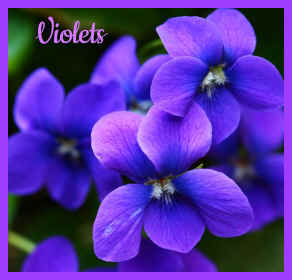
Cornflowers (Bachelor Buttons) Cornflowers have a slightly sweet and spicy clove taste.
They crystallize well, and are used candied, like violets, and in salads, tea flavorings or for seasoning ham.
Ageratum - Houstonianum The fluffy flowers taste like carrots.
Hosta
Every bit of the plant is edible. In salads and any other way you'd use greens. I like the young leaves that will grow back anyway, and I roll fillings in the larger ones, because the leaves on Hosta "Patriot", shown here, are so darned cute. It has value as a survival super food. Nothing's wasted.
Borage - (starflower)
pretty blue flowers taste like cucumber.. They are used in summer drinks, and in various salads and teasCalendula
The peppery petals of calendula are a fantastic addition to salads, stir fries, pasta. They're tangy, and colorful in your recipes. The petals can be used as an alternative to saffron.
French Marigolds
Fresh, zingy and citrus-like, the petals of French marigolds are edible, and are another great, colorful addition to summer salads. The petals can also be used in cooked dishes and are also sometimes referred to as ‘poor man’s saffron’.
Chrysanthemums
All chrysanthemum flowers can be eaten, though they can differ considerably in how they taste. Some are hot and peppery, some much milder, and some even sweet. Awesome in different types of salads. If you grow a football mum, think of all the petals you'll have.
Gladiola Not only is the Gladiola pretty, but they're colorful on a plate, and can be stuffed and baked, or deep fried. The individual flower petals have a mild lettuce taste. that's great in a salad.
Roses A favorite edible flower of mine. It's been used for centuries to make rose water, to add a powerful rose taste to certain dishes.
I've had candied rose petals, and have added them to my handcrafted teas, and tossed petals on the tops of cakes. Lot of vitamin C to be had from roses and the hips if you harvest those in the fall. Rose petals are very ornamental, however you use them, and they are quite tasty and easy to harvest by simply holding a basket beneath the blooms and shaking your rose bush when the flower petals are getting ready to drop.
Honeysuckle
Honeysuckle blossoms add sweetness to jams, jellies, and other sweet treats. It also makes a great addition to your herbal tea blends. They have a honey-like taste.
Pinks (Dianthus)
-Sweet WilliamThe petals can be steeped in tea, or candied. The petals are sweet, with a clove taste, but remember not to include the white, bitter base of the flower when you harvest. There are several varieties and colors of Sweet William.
Snapdragons Snapdragons have a slightly bitter flavor that resembles chicory.
Good in savory dishes and salads. The pretty shape of the "snapping dragon" flowers adds decoration and fun to plated food.Mexican Marigolds
These flowers taste like pomegranate. Great in salads, salad dressings, syrups.
Lavender
Lavender has a mildly sweet, but strong flavor, and is added to lots of sweet baked goods, teas and ice cream. Use in moderation - this stuff is really strong.
Begonia
- SemperflorensFlower petals taste like lemon. Great tossed into a salad or sprinkled on fish dishes.
Geraniums
Geranium flowers taste like grapefruit. All geranium flowers are pretty and taste great in salads, marmalades, desserts, and cake topping.
Chickweed Flowers You can eat the flowers, stems and leaves and they all taste like a mild lettuce.
It has pretty little white flowers almost entirely covering the plant, that make a great addition to your salads. Some consider it a weed, but I grow a lot of this as an ornamental groundcover, and pot "spiller". It's another valued survival plant.
Edible Flowers of Veggies, Herbs, Weeds and Fruit Trees
Naturally, if you pick and eat the flowers of fruit trees and veggies, you'll have that many less potential fruits and veggies. If you grow enough so that you can spare some blossoms, they're edible.
Elder - The elder flower is used in a lot of drinks and dishes.
Note: Research toxicity and amounts. Some parts of certain plants are not good for you. Despite all the advertisements for elderberry as a miracle remedy, some parts of the plants shouldn't be used and some amounts are toxic.. I think only the berries are a problem, not the flowers. I love elderberry wines, and I have a few Elderberry shrubs (sambucus) but I prefer not making it myself.Cherry blossom is often an ingredient in Japanese cuisine. The blossoms are sometimes pickled in salt and vinegar, and is also used in traditional confections.
The flowers of plum trees, peach trees, citrus trees, and apple trees are also eaten, but they are mostly used as decoration. I would look up toxicity of any of these flowers and trees I plan to ingest from the above-mentioned list, to check for any health issues.
Dandelion
Dandelion leaves or greens are added to salads, and their roots can be dried and roasted to create a coffee-like substitute. It is a little like chickory.
The petals of the dandelion flower have a mildly sweet taste. There are lots of recipes using dandelions. The yellow flower is sweet. Flower buds or flowers can be fried to make fritters, and those pretty little flowers, that can strike horror into the hearts of grown gardeners and landscapers everywhere, are made into wines, teas and jellies.
Dandelion leaves are considered bitter greens. If you like mustard and collard greens, you'll love these. I pick the very young leaves before a flower stem or bud appears, because that's only slightly bitter, and it's great when in a mixed spring greens salad. Then I rid myself of that stubborn weed.
Chives I've grown and eaten plain Chives and Japanese Garlic Chives and flowers for years, it's a perennial, zero maintenance, and they're yummy. I snip the flowers and stems and combine them in salads, add it to stir fried dinners, and throw them, and the stems, into my slow cooked soup near the end of cooking time. They dry really well. The taste is a mild onion/garlic flavor. I snip the flowers off as it grows so it doesn't go to seed anyway, so I might as well eat them.. These herbs also keep destructive bugs away from other plants.
Chamomile Flowers
Chamomile is an herb that has a gentle taste of apple, and there is a mellow, honey-like sweetness and floral taste, as well.
The flowers are often used to make a very calming and relaxing medicinal tea. This flower is a member of the daisy family.
Squash Blossoms A well-known culinary delight, which can be stuffed with just about anything to create a wide range of appetizers and meals. Bake, deep fry or stir fry. The male flowers that you remove from your squash after pollination are a second blossom yield.
These used to be hard to find, except in specialty shops, because they were not widely known in culinary circles, and were so perishable. You grew the squash yourself. Nowadays, I see them in produce departments and farmers markets. Which is nice, because you don't want to remove too many blossoms from your garden plants, which become the vegetable.
Squash blossoms are soft, delicate, and taste mildly like the squash itself. Awesome floating on a bowl of Squash Soup.
Pea flowers I'm referring to the flowers on edible pea crops, like snap and snow peas, not the ones on ornamental sweet pea flower vines. Although, they might be edible too, as far as I know.
Delicate, pretty additions to salads. Like the peas, pods and shoots of the plant, the flowers have a mild pea flavor.
Clovers Both the red and white clover flowers can be eaten.
They're edible from root to flower, and you can eat them raw, boiled and sauteed. A survivalist food item when it's in season. Some consider it a weed, some consider it a wildflower, I considered it a lawn substitute. Out with the water-greedy high-maintenance grass lawn, in with the white clover, sweet=smelling, no-mow lawn. With flowers that pollinators love.
Red clover has long been thought to improve blood-vessel health in menopausal women, according to a 1999 study in the Journal of Clinical Endocrinology and Metabolism.
The red clover flowers are the tastiest, and are used in teas, syrups and a lot of desserts. Bees use it's pollen to provide us with those very tasty clover honeys.
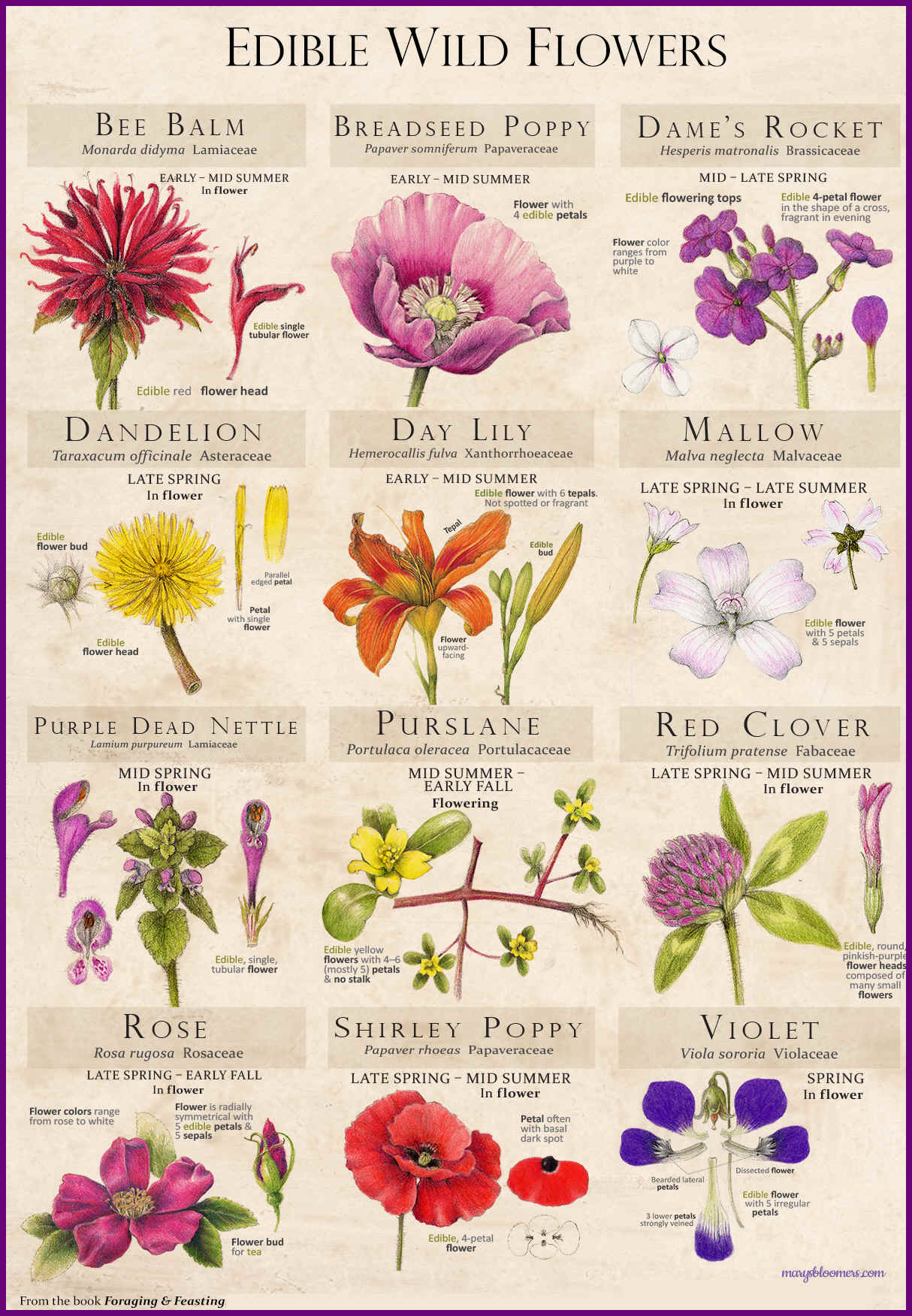 |
Resources: wikipedia Wild Science |
If you
love vintage floral and garden graphics, visit
our gallery-->
Quick Links
Content, graphics and design ©2020 marysbloomers.com
All rights reserved

